Hello everybody and welcome to Episode 2 of What’s in that Hole?, a new series I’m writing for my blog.
In the last episode, we found a creature that sends shivers up many people’s spines. Will today’s episode reveal a more cuddly friend? Read on to find out.
The holes
We’ve got multiple holes in this episode, though all are made by the same type of creature. You can see the holes below. All are at the base of a rock and have an elongated but narrow opening.
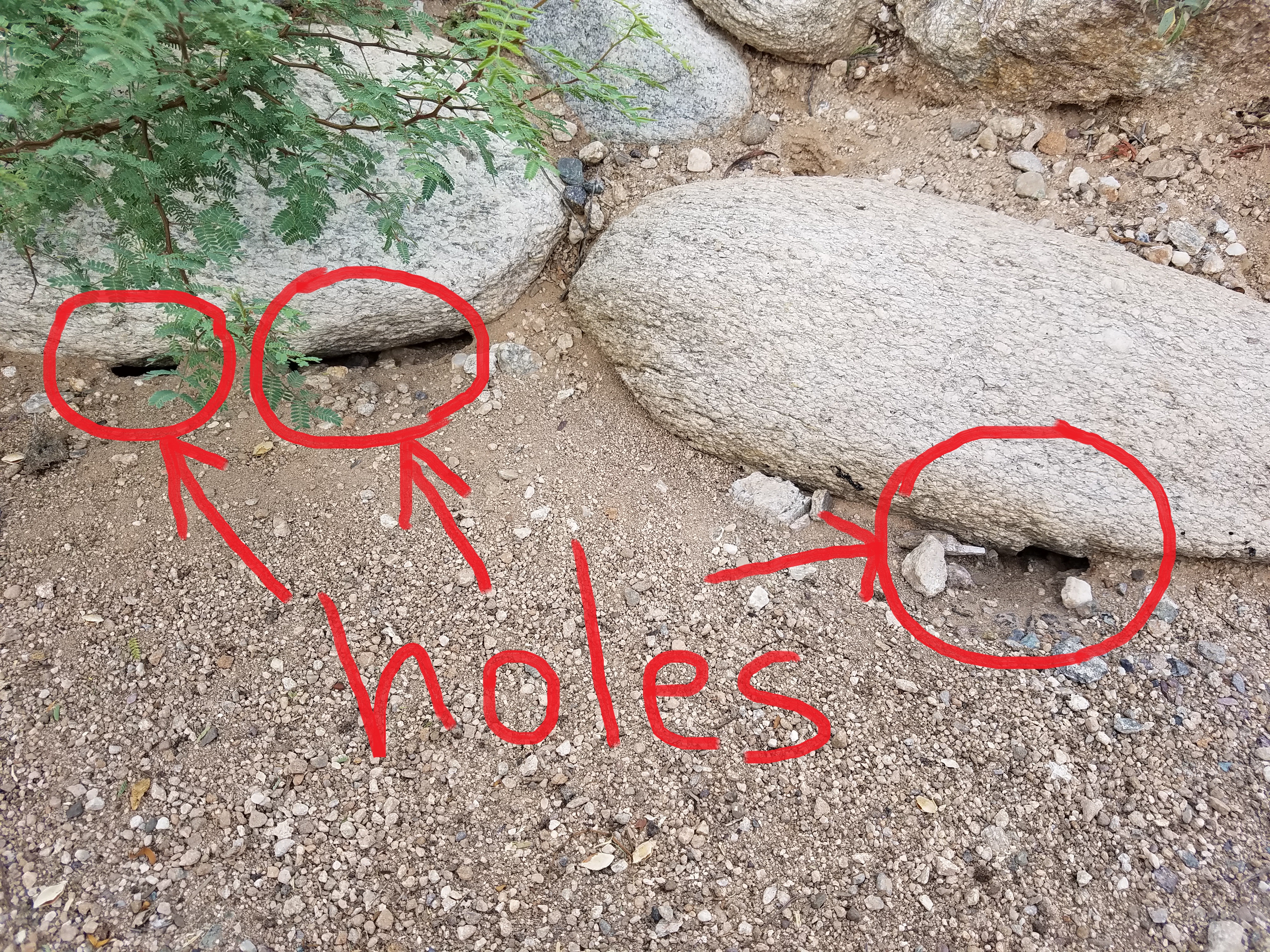
The holes.
Here are some closer views of our three holes:
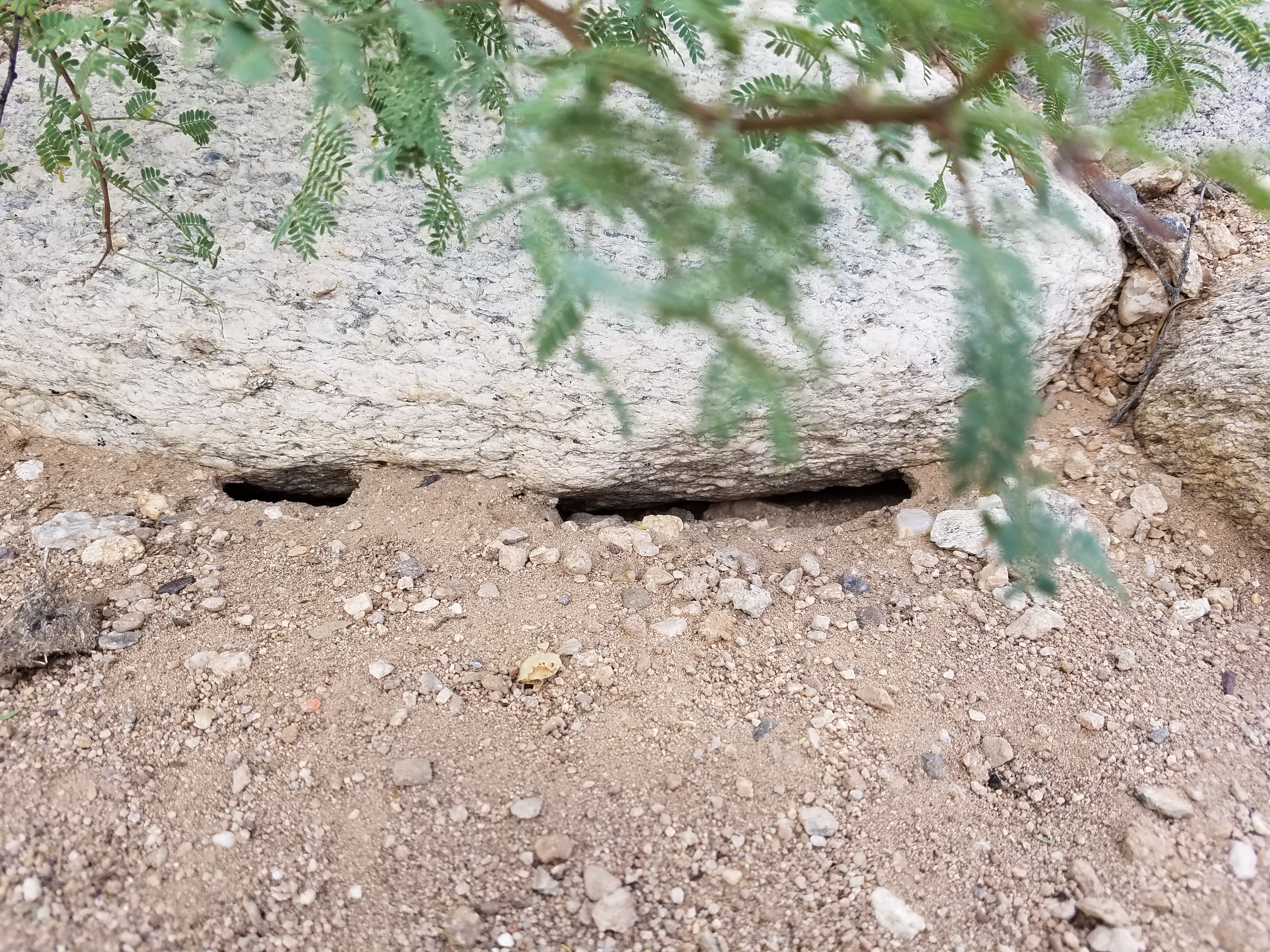
Closer view #1.
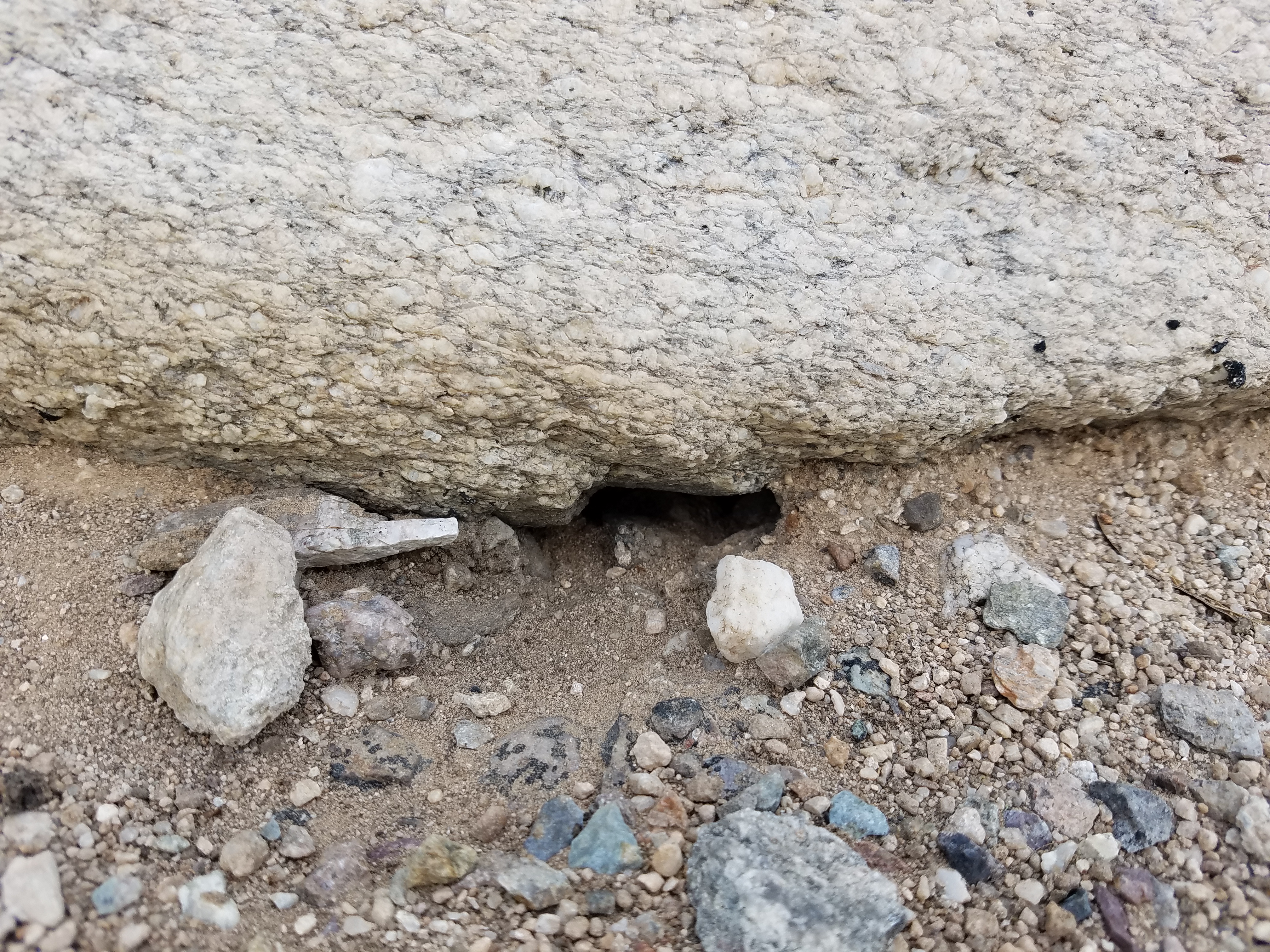
Closer view #2.
Interesting. I bet you don’t know what’s in these holes!
The occupants
As for Episode 1, I had to come back at night to determine the holes’ architects. But before we get to what’s in that hole, I first must share a picture I took of an onlooker to my expedition:
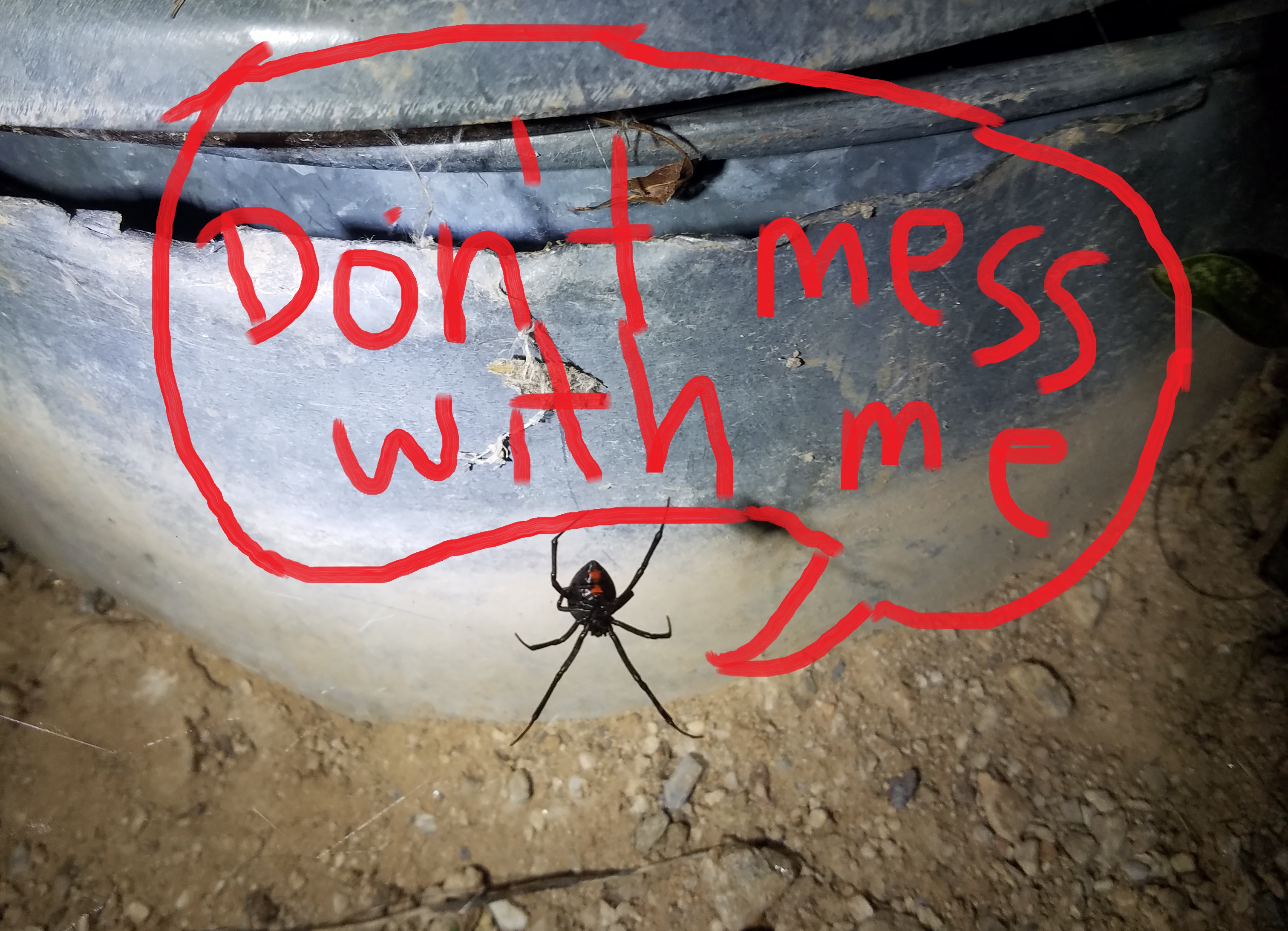
Black widow visitor.
Yes, that’s a black widow. It’s hanging out at the mouth of my neighbor’s in-ground trash can. I hope he doesn’t accidentally find the spider next time he takes his trash out!
So that’s desert life for you. Anyway, on to the holes!
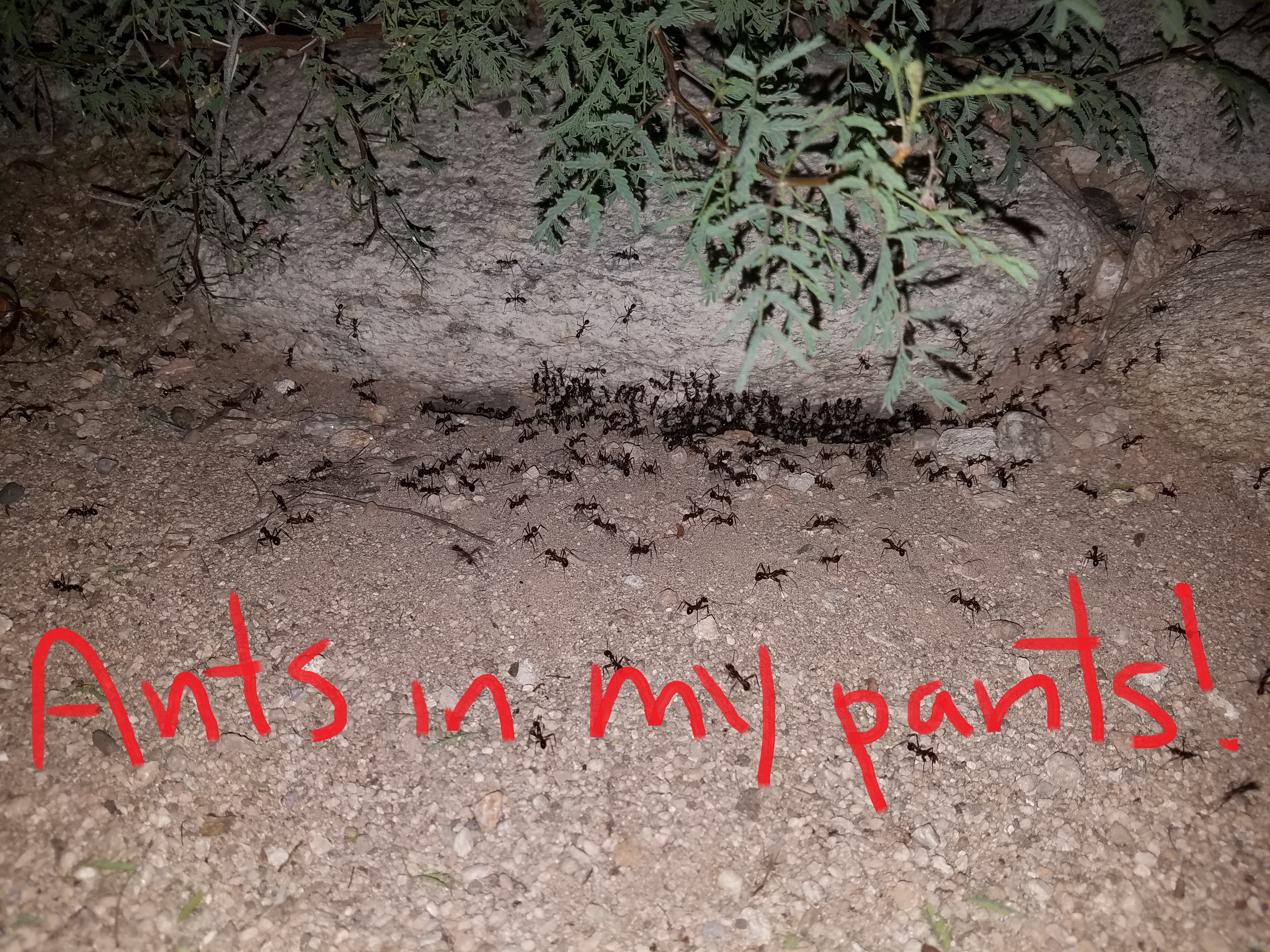
It’s ants!
It’s ants! Harvester ants, to be specific. At least I think they’re harvester ants. Various harvester ant species are pretty common in the Sonoran Desert.
I can hear you now – thinking to yourself, “Ants? That’s not very interesting.” Well, my friends, there you are WRONG! Ants are incredible little hole-makers and are to be appreciated. Plus, in this case, they’re actually up to something rather curious. You’ll notice in the zoomed-in photo below that some are lined up around the holes’ mouths. Not only that, but a good number of them have larvae/pupae in their mouths!!! They seem to be airing them out. Any entomologists want to shed some light on this behavior?
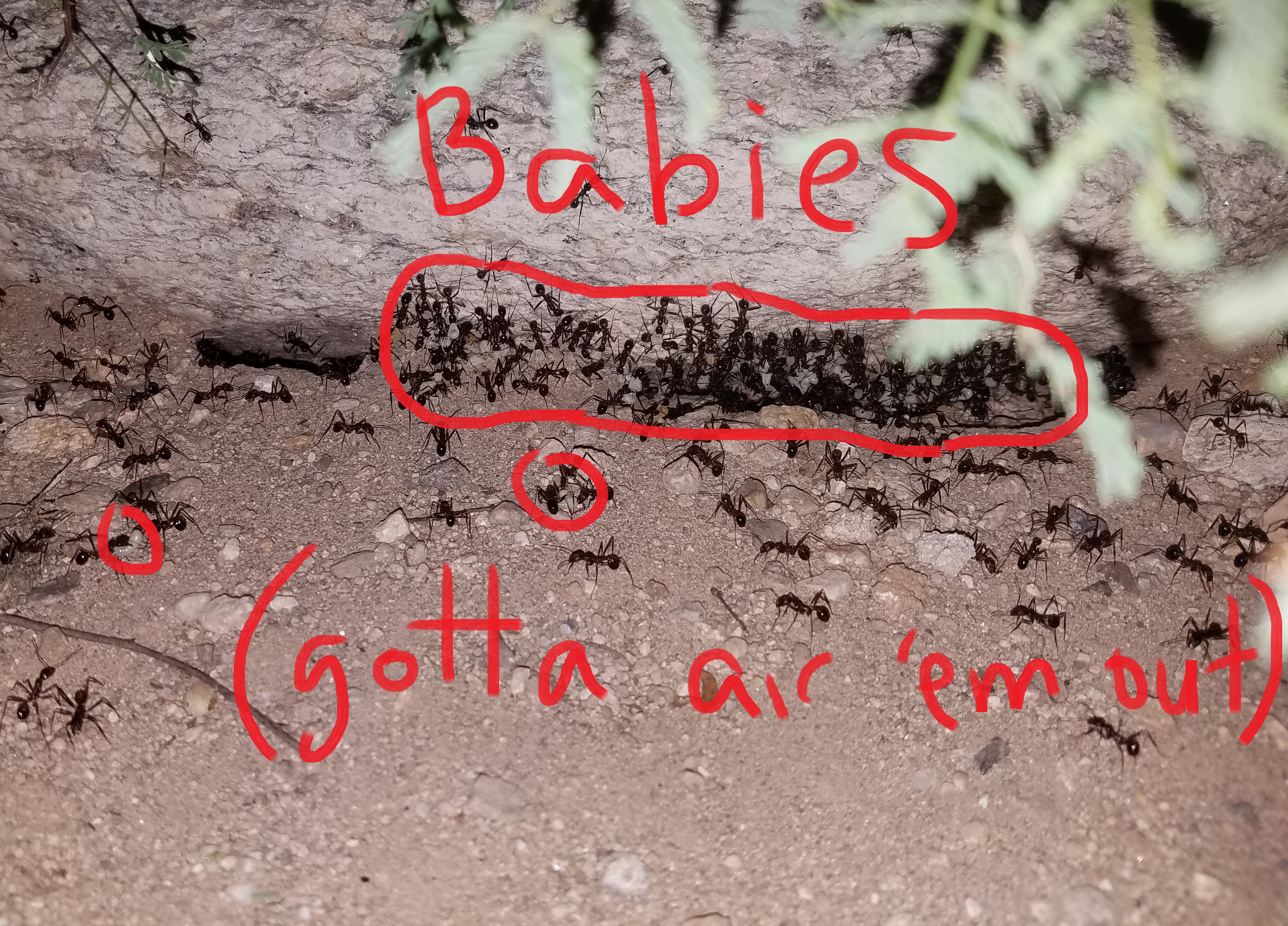
The ants have babies.
Note that some of the larvae are even developed enough that you can see their eyes (I think that makes them pupae then? Where are my entomologist friends?). I’m struck by the similarities between baby ants and aliens.
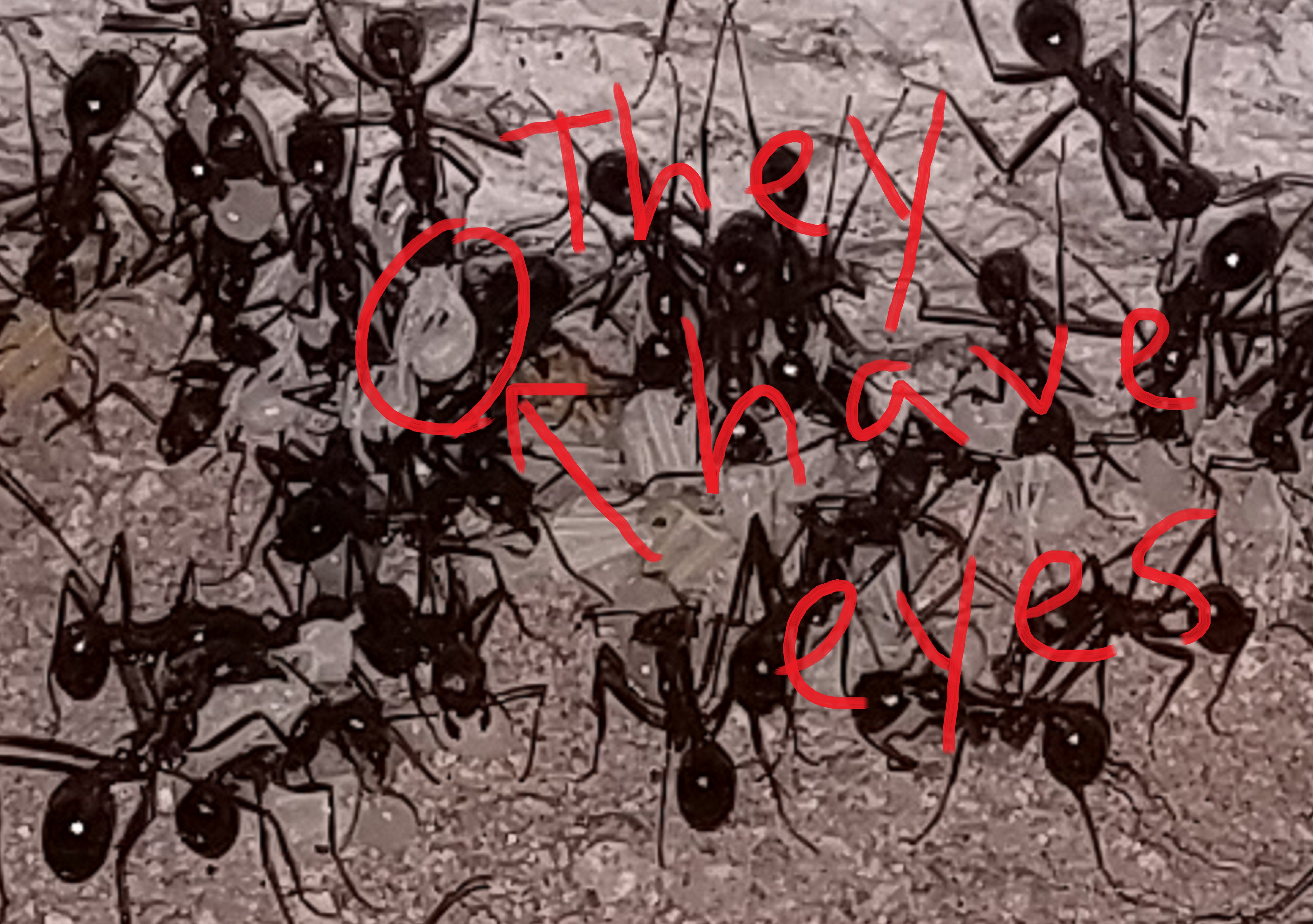
Ant babies look like aliens.
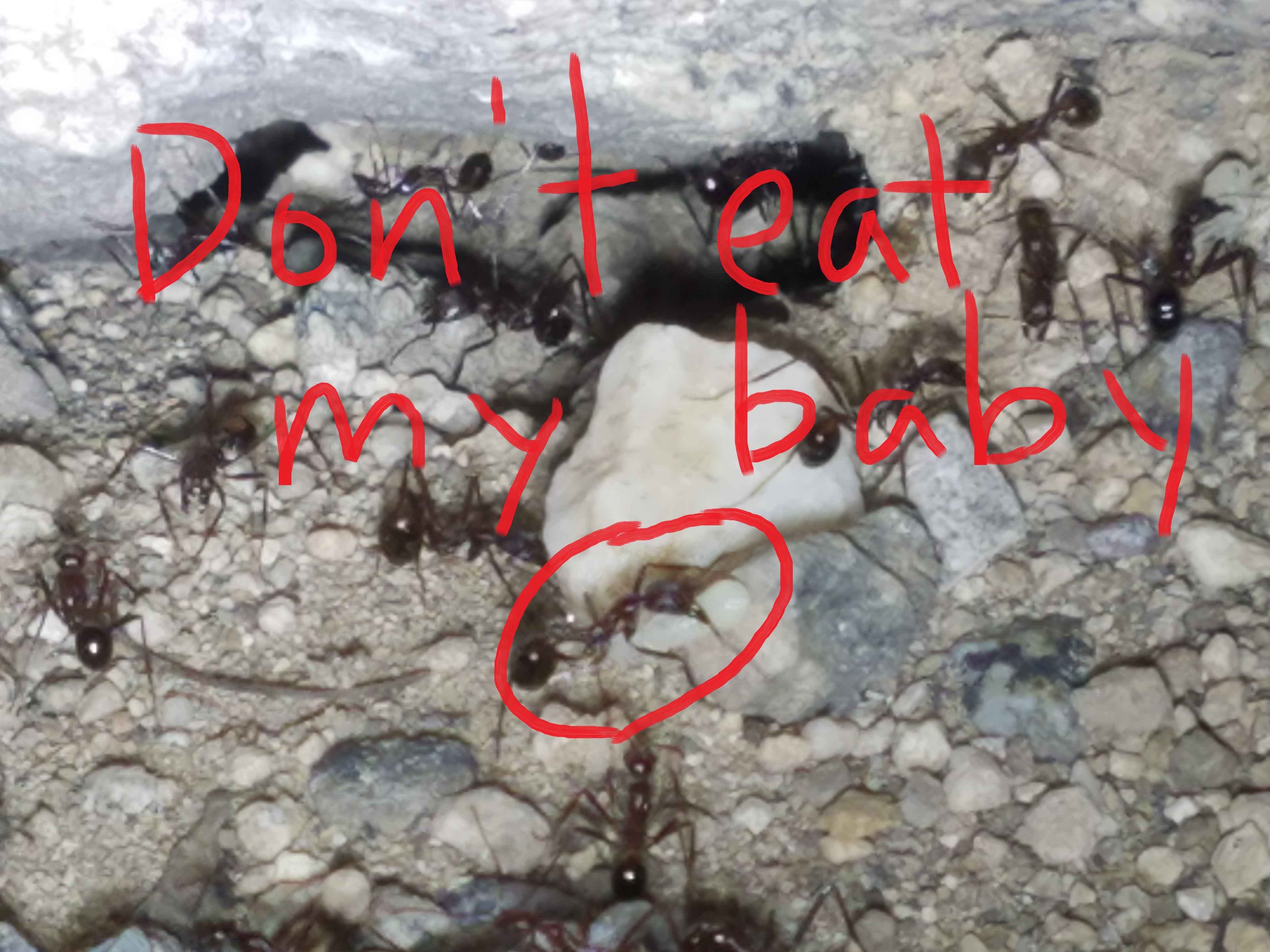
Moving an ant baby.
And there you have it! Harvester ants inhabit these holes. Unfortunately not the cuddly creatures you were hoping for. Oh well – maybe next time.
Thanks for reading!
Go to previous episode
Next episode available here!
Share this Post
